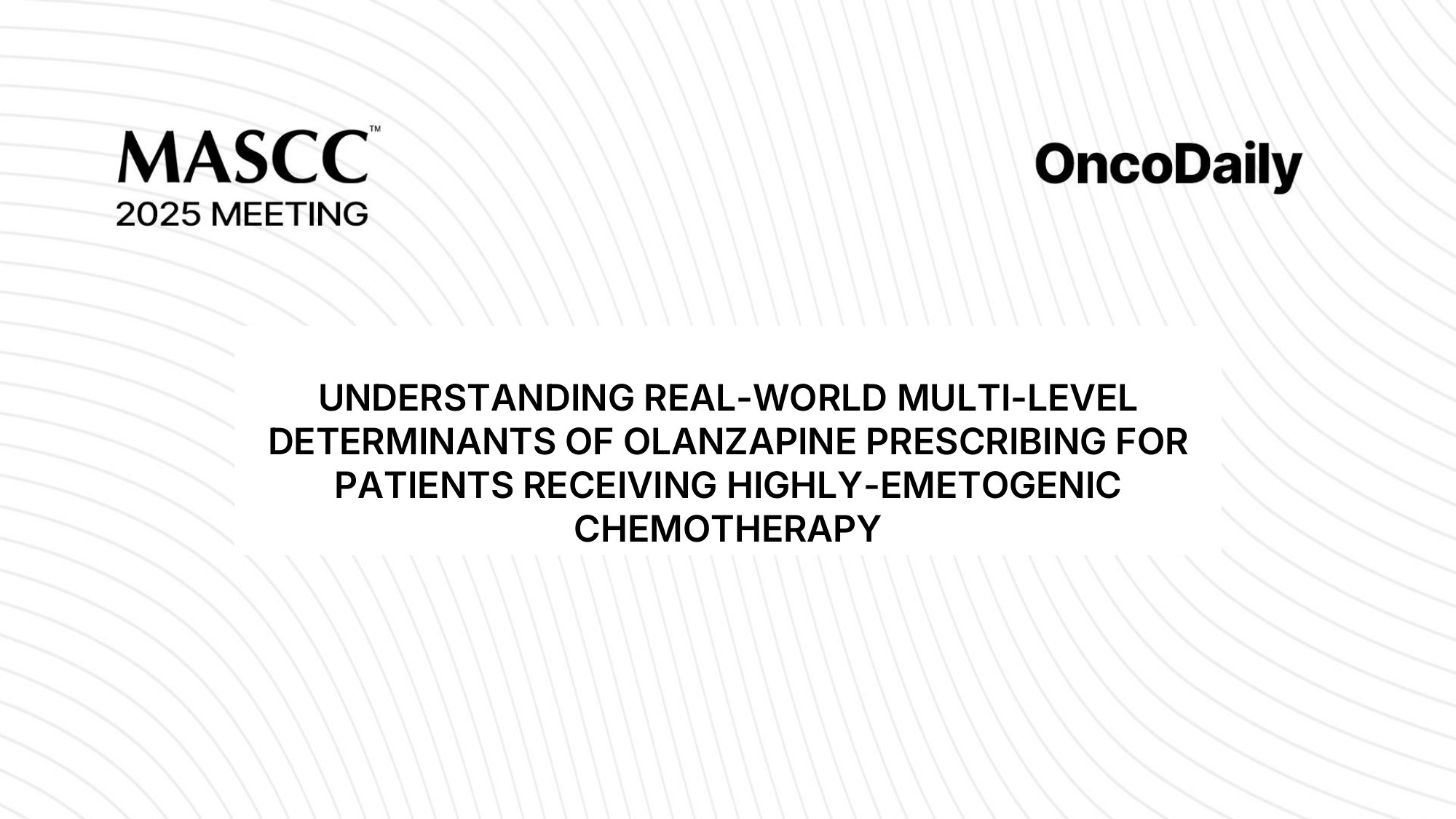Olanzapine, despite being strongly recommended in updated clinical guidelines and supported by robust evidence for preventing chemotherapy-induced nausea and vomiting, remains underused in real-world oncology practice—especially in the supportive care setting.
At the MASCC 2025 Annual Meeting, Dr. Soroush Fariman and colleagues from the United States and United Kingdom presented a pivotal study examining this gap. Their research investigated the prescribing patterns of olanzapine among patients receiving highly emetogenic chemotherapy (HEC), with a focus on identifying multi-level determinants—including clinical, demographic, and contextual factors—that influence whether this effective antiemetic is included in prophylactic regimens.
In 2020, ASCO updated its guidelines, recommending a four-drug prophylactic regimen for HEC: a 5HT3 receptor antagonist (5HT3RA), NK1 receptor antagonist (NK1RA), dexamethasone, and olanzapine. Despite this, real-world implementation has remained inconsistent.
Background
Olanzapine has been shown in multiple randomized trials to significantly reduce both acute and delayed chemotherapy-induced nausea and vomiting (CINV), particularly when added to the standard three-drug antiemetic regimen of a 5HT3 receptor antagonist, NK1 receptor antagonist, and dexamethasone. Its efficacy in controlling breakthrough nausea and improving patient-reported outcomes has made it a key component in updated clinical guidelines, such as those from ASCO.
However, despite this strong evidence base, olanzapine remains underutilized in routine practice. Several factors may contribute to this disconnect, including concerns about excessive sedation, especially in older adults, as well as stigma associated with its primary use in psychiatry as an antipsychotic medication. Additionally, prescribing practices often vary widely across institutions, influenced by local protocols, provider familiarity, and access to supportive care resources.
This study aimed to systematically examine these real-world prescribing behaviors within a large, diverse oncology network across both academic and community settings in the U.S., providing much-needed insight into the multi-level determinants—clinical, socio-demographic, and contextual—that influence whether olanzapine is incorporated into antiemetic regimens for patients receiving highly emetogenic chemotherapy.
Methods
The study employed a retrospective cohort design using electronic health record data from an academic cancer center and seven affiliated community oncology practices. Eligible patients were adults who began highly emetogenic chemotherapy in 2022.
Patients were categorized based on whether they received:
- A three-drug antiemetic regimen (5HT3RA + NK1RA + dexamethasone), or
- A four-drug regimen (same as above plus olanzapine)
The team used multivariable logistic regression to assess associations between the type of antiemetic regimen prescribed and a variety of factors: age, BMI, cancer type, chemotherapy regimen, socioeconomic status, geographic distance from care, and whether care was delivered at an academic or community site.
Key Findings
Out of 668 patients, 199 (29.8%) received the four-drug regimen including olanzapine, while the majority—469 (70.2%)—received only the three-drug combination, indicating a substantial gap in guideline adherence.
Multivariate analysis revealed several statistically significant predictors of olanzapine prescribing:
- Age: Older patients were less likely to receive olanzapine.
- Ages 60–69: OR = 0.38 (p = 0.023)
- Age ≥70: OR = 0.22 (p = 0.004)
- BMI: Underweight patients (BMI < 18.5) were more likely to receive olanzapine (OR = 3.26, p = 0.050)
Socioeconomic Status:
- Patients from lower-middle-income areas were less likely to receive olanzapine (OR = 0.52, p = 0.038)
- Those living farther from the treatment site showed a trend toward increased use (OR = 2.06, p = 0.062)
Treatment Regimen:
- Olanzapine use was more common in cisplatin-based regimens
- Less frequent with anthracycline + cyclophosphamide
- Less frequent in patients with gynecologic or head and neck cancers
Practice Setting:
- Prescribing was significantly higher at the academic center compared to community practices (OR = 0.33, p < 0.01)
Conclusion
Despite clear ASCO guideline recommendations, olanzapine remains underutilized in antiemetic regimens for patients undergoing highly emetogenic chemotherapy. The study demonstrates that prescribing is not solely based on clinical need—it is shaped by age, location, socioeconomic status, and care setting. These disparities highlight the need for improved clinician education, decision-support tools, and system-level interventions to ensure equitable, evidence-based supportive care.
By addressing these real-world barriers, cancer care teams can better align practice with evidence and ultimately improve patient experiences during chemotherapy.
